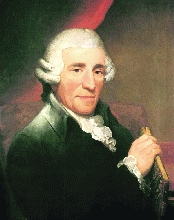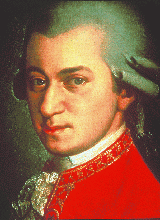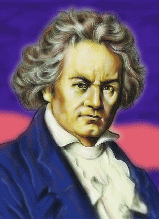The Evolution Of Music-Part I
 The Evolution Of Music-Part I
The Evolution Of Music-Part I
In layman’s terms, music can be defined as an art form whose medium is sound organised in time. This art form, regardless of genre (and there are an innumerable number of them) is governed by different elements such as pitch (which affect the melody and harmony), rhythm (which affect the tempo, meter and articulation), dynamics and the sonic qualities of timbre and texture.
Considering the enormity of the task that this column is undertaking, one is expected to question where to begin. The simple answer to that querry is, at the beginning….
THE HISTORY -
Music has been a part of life since time immemorial. There have been findings of musical instruments from numerous archaeological sites such as those of the Indus Valley Civilization. Here, musical instruments such as flutes and other stringed instruments have been unearthed which indicate  that music was very much a part of the way of life of these ancient people. India for one has a long history of music and this fact is further strengthened by references to Indian classical music or marga which can be found in the Vedas which are the ancient scriptures of the Hindu tradition. Music was also an important part of cultural and social life of the ancient Greeks and played an important role in ancient Greek theatre. In medieval Europe, the bards and minstrels who often wove general issues and opinions into the lyrics of their songs were a common scene in market places and royal courts. Music served as a mode of recreation as well as a conduit for people to voice their grievances against the aristocracy. Though it was a subtle criticism of the aristocracy, music was not as widespread and far reaching as one supposes it would have been in those troubled times. The music of the middle ages of European history was more or less subdued and languid in character and it is only decades later, with the advent of the printing press, that music received a major fillip. The introduction of the commercial printing presses led to widespread dissemination of musical styles in a much more rapid pace across larger areas. This gradually led to the era of Baroque music (1600 – 1750) in which the first operas were written. During this period, several major music forms were defined which lasted into later periods when they were expanded on and evolved further.
that music was very much a part of the way of life of these ancient people. India for one has a long history of music and this fact is further strengthened by references to Indian classical music or marga which can be found in the Vedas which are the ancient scriptures of the Hindu tradition. Music was also an important part of cultural and social life of the ancient Greeks and played an important role in ancient Greek theatre. In medieval Europe, the bards and minstrels who often wove general issues and opinions into the lyrics of their songs were a common scene in market places and royal courts. Music served as a mode of recreation as well as a conduit for people to voice their grievances against the aristocracy. Though it was a subtle criticism of the aristocracy, music was not as widespread and far reaching as one supposes it would have been in those troubled times. The music of the middle ages of European history was more or less subdued and languid in character and it is only decades later, with the advent of the printing press, that music received a major fillip. The introduction of the commercial printing presses led to widespread dissemination of musical styles in a much more rapid pace across larger areas. This gradually led to the era of Baroque music (1600 – 1750) in which the first operas were written. During this period, several major music forms were defined which lasted into later periods when they were expanded on and evolved further.
After this Baroque period of music came the Classical period (1750 – 1800) in which the music often featured a prominent melody with accompaniment. The now popular instrumental music was dominated by further evolution of musical forms initially defined in the Baroque period: the sonata, and the concerto, with the addition of a new form, the symphony. Franz Joseph Haydn and Wolfgang Amadeus Mozart are among the central figures of the Classical period.

 The 1800s popularly known as the Romantic era (1800 -1890) of music is a period in which transitional composers like Ludwig Van Beethoven and Franz Schubert introduced a more dynamic and expressive style. It was in this era that the emotional and expressive qualities of music came to the fore and blanketed technique and tradition. The late 19th century also saw the opera grow substantially in size and popularity. Composers of this era created much longer and more complex musical works with more complex chords and to create more dramatic tension.
The 1800s popularly known as the Romantic era (1800 -1890) of music is a period in which transitional composers like Ludwig Van Beethoven and Franz Schubert introduced a more dynamic and expressive style. It was in this era that the emotional and expressive qualities of music came to the fore and blanketed technique and tradition. The late 19th century also saw the opera grow substantially in size and popularity. Composers of this era created much longer and more complex musical works with more complex chords and to create more dramatic tension.
The radio which was a groundbreaking invention played a major role in the growth of popularity of music in the 20th century. Phonographs were used to replay and distribute music and the focus of art music was characterized by the exploration of new rhythms, styles and sounds.

So far, we have more or less covered the genealogy of this very popular art form. In the next issue, we will delve deeper into the vast world of music. Join us as we get a more in depth look at all the genres and sub genres of music, their differences, strengths and shortcomings. There is a whole different world out there, a world just waiting to be heard. Until next time…….



